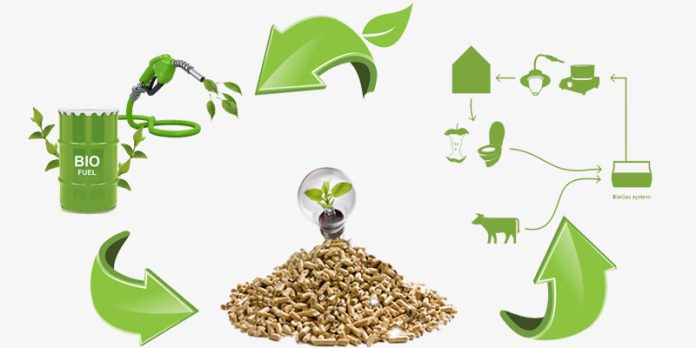Let’s dive into the world of biomass energy, where nature’s resources fuel our daily lives in more ways than we might realize. From ancient wood fires to cutting-edge biofuel technology, biomass energy has come a long way in shaping our energy landscape.
Exploring Biomass Energy
So, what exactly is biomass energy? Simply put, it’s energy derived from living or once-living organisms. Picture the crackling warmth of a wood fire — that’s one of the earliest forms of biomass energy dating back to the dawn of humanity, around 1.5 million years ago.
Fast forward to the modern era, and while biomass now only accounts for about 5% of U.S. energy consumption, it’s still a vital source of power in many developing nations, especially for heating and cooking purposes.
The Many Faces of Biomass
Biomass energy isn’t a one-size-fits-all concept. It encompasses a diverse range of organic materials, from plants to waste products, each with its own unique potential for energy generation.
- Woody Biomass: Think firewood, wood pellets, and even sawdust from lumber mills. These materials are the backbone of biomass energy today.
- Agricultural Biomass: Everything from crop residues to dedicated energy crops like switchgrass and algae can be harnessed for energy production.
- Municipal Solid Waste: Even our trash can become a treasure trove of energy via processes like burning or decomposition.
- Landfill Gas: Organic waste in landfills produces methane, a potent greenhouse gas. By capturing and utilizing it, we can turn waste into energy.
- Animal Manure and Human Sewage: Yes, even the less savory stuff can be transformed into valuable biogas through the magic of anaerobic digestion.
- Algae: These tiny organisms might hold the key to sustainable biofuels, offering a renewable alternative to traditional fossil fuels.
Unlocking the Power: Biomass Conversion Processes
Turning biomass into usable energy requires some clever chemistry and engineering. Here are some of the key conversion processes at work:
- Direct Combustion: The simplest method involves burning biomass to produce heat or electricity, just like stoking a fire.
- Thermochemical Conversion: This fancy term covers processes like pyrolysis and gasification, where heat and catalysts transform biomass into fuels and gases.
- Chemical Conversion: By subjecting biomass to chemical reactions, we can create liquid fuels like biodiesel.
- Biological Conversion: Harnessing the power of microorganisms, processes like fermentation and anaerobic digestion turn biomass into biofuels and biogas.
Where Biomass Energy Shines: Industries and Applications
So, who’s putting biomass energy to work? Here’s a breakdown by sector:
- Industrial: From heating factories to powering manufacturing processes, industries rely on biomass for its reliable and sustainable energy.
- Transportation: Liquid biofuels keep vehicles moving, offering a greener alternative to traditional gasoline and diesel.
- Residential and Commercial: Whether it’s cozying up by the wood-burning stove at home or using renewable gases for heating and cooking in commercial spaces, biomass plays a role in everyday life.
Biomass Energy: A Global Perspective
While biomass energy has its roots in ancient practices, its modern-day impact is truly global. Southern states in the U.S. lead the charge in biomass energy generation, while countries like China and Brazil boast impressive bioenergy capacities.
In nations like Ethiopia and the Democratic Republic of Congo, biomass remains a dominant source of energy for heating and cooking, offering a lifeline for millions without access to traditional biomass fuels.
Policy, Challenges, and the Road Ahead
Of course, the journey toward a biomass-powered future isn’t without its challenges. Federal subsidies and regulations aim to support the industry’s growth, but questions remain about its long-term sustainability and environmental impact.
While biomass energy offers many benefits, including renewable supply chains and reduced waste, it’s not without drawbacks. Concerns about land use, emissions, and water consumption underscore the need for careful management and innovation.
Looking ahead, the future of biomass energy holds promise but also calls for continued research, investment, and collaboration. With the right strategies in place, biomass could play a vital role in our transition to a more sustainable energy landscape.
Conclusion: Toward a Greener Tomorrow
In closing, biomass energy represents both a nod to our past and a beacon of hope for the future. By tapping into nature’s bounty in innovative ways, we can unlock a cleaner, more sustainable energy future for generations to come.
Let’s discuss: What role do you see biomass energy playing in our quest for a greener planet?

















